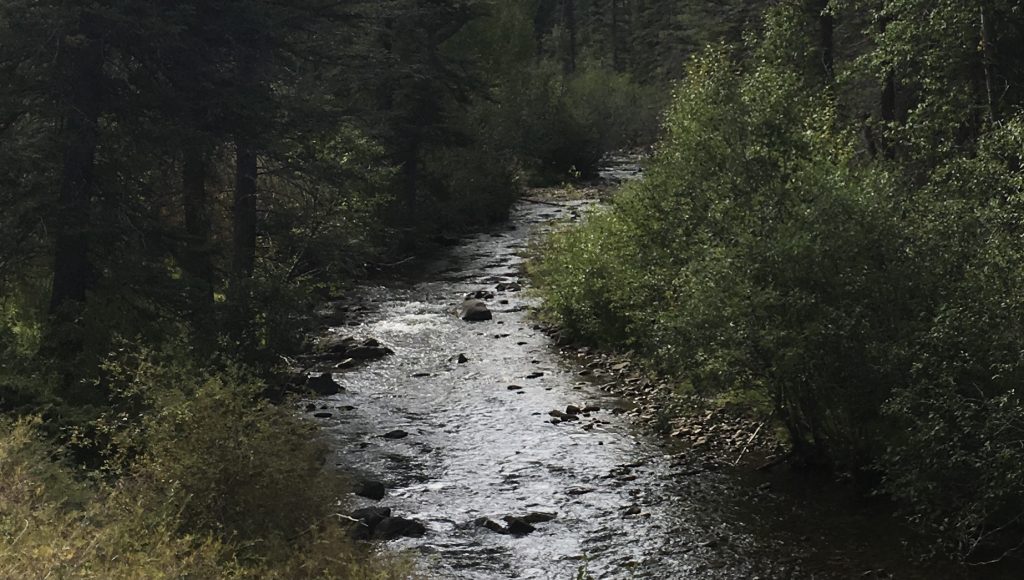The Two Sides of Intention
[ brief pause as theme music rises ]
It’s been said that better questions lead us naturally to better answers, and that it’s in not knowing that we open the doorway to knowing. I’m Scott Lennox and you’re listening to The Beautiful Question, a consideration of things that truly matter in a complex world.
[ brief pause ]
Much is said about intention or about thinking and behaving intentionally, but are we considering both sides of the coin?
Could it be that there are two sides to being intentional? Join me this week as we consider what that means. Stay with me.
[ theme music fades ]
Some time back, I overheard a couple talking quietly as they slowly passed the place where I was standing on the walking path beside the river that goes through town.
“I’m sorry,” he said, “I didn’t mean to let myself get so upset this morning.”
“I know,” she answered with what sounded like genuine sincerity in her voice. “But you didn’t mean to stay calm,” she said. “You didn’t mean not to get upset.”
Because they kept walking, I couldn’t hear what came next, but it got me thinking about a time when someone ran into my car at an intersection where four different streets converge.
It was early morning and I sat waiting for the light to turn green so I could head downtown to a meeting. When something moved in my peripheral vision, I glanced to my right to see a lone vehicle heading in my direction as it curved through the intersection. Though ours were the only two cars on the road, and though there were open lanes on each side of my car, the other car scraped down the driver’s side of my vehicle so forcefully that I couldn’t open my door and had to get out on the passenger side.
Dutifully, the driver stopped and got out, and then said, “I’m so sorry! I didn’t mean to hit your car.” When I told her I believed her, she looked relieved and started to walk away.
“Where are you going?” I asked.
“You said you believe me,” she answered.
I shook my head and took a breath.
“It’s true, I said. “I do believe you. I believe that you did not mean to hit my car.”
“Good, she said, nodding hopefully.
“I also believe that you didn’t mean to miss my car,” I told her. “If you’d meant to miss it, you would have steered around me and neither of us would be heading to the body shop today.”
As she brought out her insurance card, she looked at me like the thought had never occurred to her or that I had spoken to her in a foreign language. To this day, that event stands out as a clear benchmark for what being fully intentional looks like.
[ brief pause ]
Intention has two sides with multiple implications on each one. The two sides are essentially “yes” and “no.” You might think of them as inclusion and exclusion. For example: What will I do and what will I not do? What will I accept and what will I not accept? How will I use my voice and how will I not use it? How will I carry myself and how will I not carry myself?
Applying it to the young man walking past me by the river: In what healthy ways will I express my emotions and in what unhealthy ways will I refrain from expressing them?
Notice also that being fully intentional is not like flipping a coin and calling heads or tails. Without over-complicating the matter, being deliberately intentional comes from making clear decisions about each side of whatever issue we are considering. Our most effective decisions arise organically from having thought through both sides with clarity and purpose.
[ brief pause ]
Photo: Scott Lennox
Becoming still and clear-minded works the same way. In each moment, we have the ability to stop and make choices about where we’re focusing our conscious attention. One side of intentional stillness can mean choosing to stop overthinking and overanalyzing. The other side could mean choosing to allow our minds to come to rest for a few moments, or letting our thoughts go by like the movement of the water in a mountain stream, or perhaps not thinking at all.
Another form of being intentional can be applied to the area of judgment. On one side, we choose to refrain from judging ourselves or someone else.
Having done that, we choose to relax our bodies and our “thoughts of the moment” long enough for peace and clarity to arise. From there, we’re free to offer acceptance and compassion to ourselves or someone else.
When we take our thinking out of overdrive long enough, clarity and peace arise naturally from deep within us. It’s not hard to see that by attending to both sides of intention we open ourselves to building more effective habits and to feeling better.
[ brief pause ]
This week’s four Beautiful Questions are designed to help you lean into the meaning of being intentional, and to help you put it more strongly into place.
One: Can you think of a time when you did something you didn’t mean to do, but also didn’t mean to refrain from doing it?
Two: What did that lack of balanced intentionality cost you?
Three: If you had it to do over again, what would your choices be on each side of the issue?
And Four: In what ways might the outcome be different if you made both sets of choices?
[ brief pause ]
As you think about these things, as you consider them well, I’d love to hear what comes to you. Write and tell me about it.
As I say each week,
My Light with Your Light!
[ theme music & sign-off ]
Thank you for joining me in these podcasts as we keep doing the things we can to respond to life in increasingly effective ways. As always, I’m open to your comments and feedback.
You can be further inspired by visiting my friends at Kosmos Journal. That’s K O S M O S Journal. Their mission is to inform, inspire, and engage global transformation in harmony with all life. You can easily find them online at Kosmos Journal dot O R G.
And at thebeautifulquestion.com, you can read the illustrated transcript of each podcast as you listen. You’ll also find an archive of all previous podcasts, including episodes three and four, guided relaxation audios that can help you practice letting go on a daily basis.
If you find these podcasts useful, don’t hesitate to share them or tell others about them. That’s a great way of helping me get a voice of calm and collaboration and balance and encouragement out into the world.
[ brief pause ]
I’m Scott Lennox, and this has been The Beautiful Question.
[ brief pause ]
The Beautiful Question is a One Light production, written, produced, and engineered by Scott Lennox at HeartRock Studios in Fort Worth, Texas, as a way of paying forward to life, being fully present, becoming better engaged with things that truly matter in a complex world, and committing to a healthier future for all of us.

